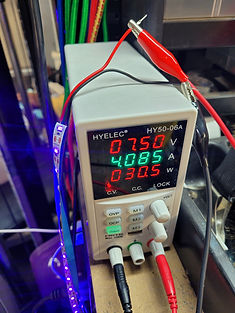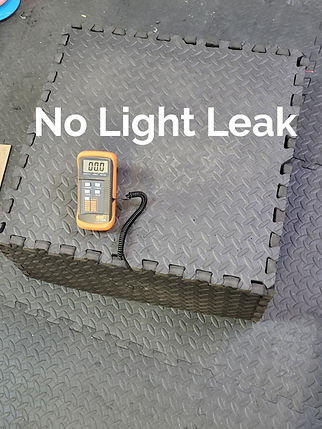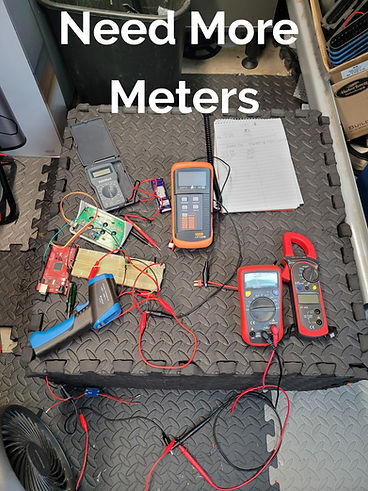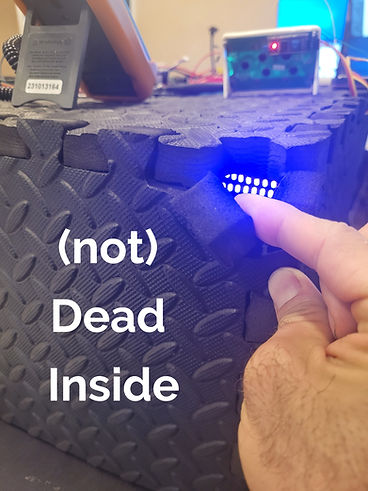
Under Construction:
Nerdy Stuff (Test Data)
I wanted to quantify how each Resonator™ variant performs with respect to battery life, power, & luminosity. I also wanted to present these findings to the customers - because I don't particularly love it when a company makes a claim about a product and gives no information to back it up. So this section presents the test data and results so you can make more informed decisions about which product is right for you.

Through testing we've discovered that not all UV light strips are created equal. Some lightstrips output more light, some output less light. Most surprising is that some configurations consume way more power for every lumen generated. This is not just inefficient, it drains the battery cells at a much higher rate - like 4x as fast!!
So certain configurations might generate marginally more light - which we want, but kill battery - such that we would need a 4x capacity battery to keep pace. much larger, much heavier, much pricier - which we don't want. Some middle ground had to be found between effectivity and efficiency & cost.
Battery Life & Power Testing
DISCLAIMER: This initial testing is flawed! Power consumption does not necessarily mean brighter output.
My first attempt to understand power performance was to hook up 2 multimeters: one in voltmeter mode, one in ammeter mode. Multiplying the 2 numbers at any given time gives the power in Watts (P=IV). However, this proved difficult to record as the numbers often changed too quick to jot down accurately. I then moved to a voltage generator that gave me steady, direct data: Voltage, Amperage, & Wattage.


For battery stamina, I first took a fully charged unit and timed how long until the LEDs became weak (subjective, I know). The results were ok, often in the range of 10-15 minutes or so, but I was unsure if the electrical performance was altered by continuously running for minutes on end. LED strips got quite warm, which potentially changes the electrical properties. I needed a way to more accurately simulate the use of a Resonator™ on the course.
So I pulled out my trusty Arduino. I knew I could easily set delays and timing intervals (3 seconds on, 5 seconds off). Also, I could easily have it count the intervals. An analog input pin with a voltage divider can be used as voltmeter. All I needed to do was use a MOSFET as a relay and I was off to the races. To eliminate subjectivity, I defined a cuttoff voltage to indicate a drained battery.


Under Construction: more to come
Luminescence Testing: Under Construction
DISCLAIMER: This method has been improved with an automatic datalogging setup.
The Light Meter we use for testing measures "Lux". This is like lumens, but based on how close the observation is. For instance, a lightbulb might emit 600 lumens no matter how far away it is, but will have different Lux levels based on how close the observer is to it. So if we always test at a consistent distance, we can compare lux levels for different configurations.





This reminds me of when Disc Golfers open their 'glow ovens' 😂

Mapping Brightness
Since batteries have a discharge curve, a dip into a Resonator with a freshly charged battery will not illuminate quite the same as a dip into a drained battery Resonator. So in order to understand the average brightness and average power, we needed to map the Lux across different input voltages/wattages.
